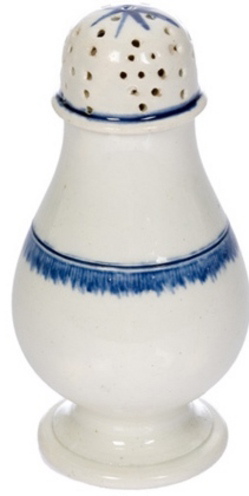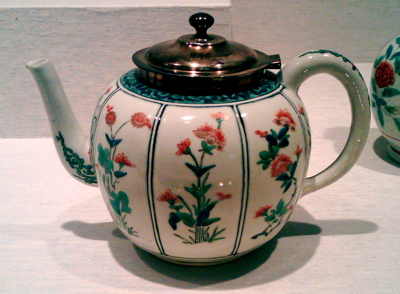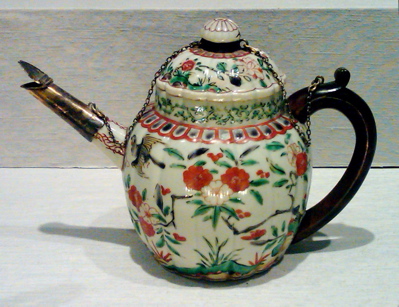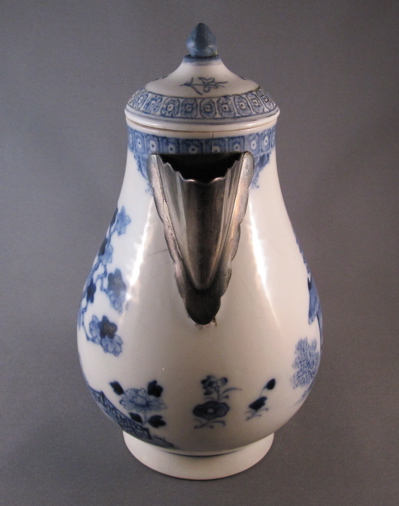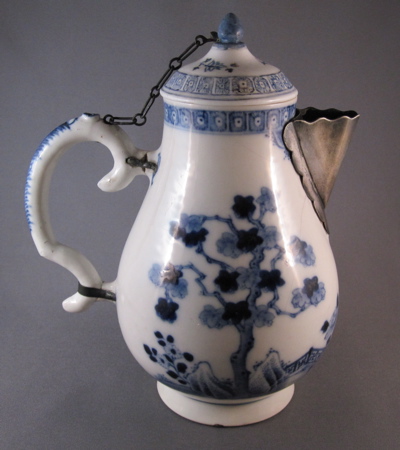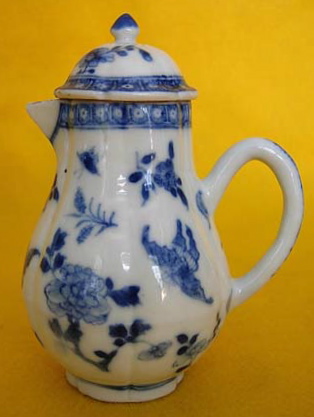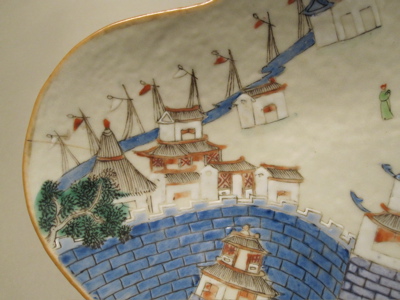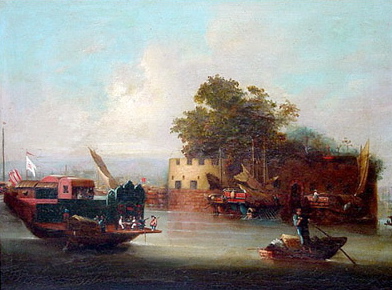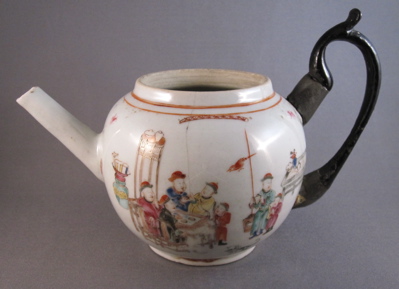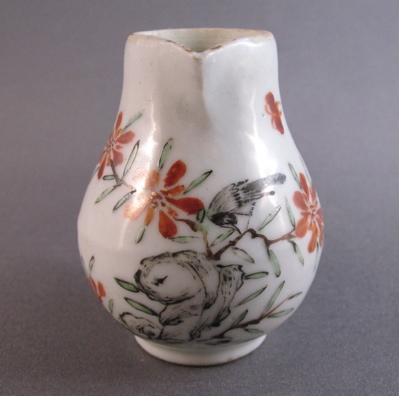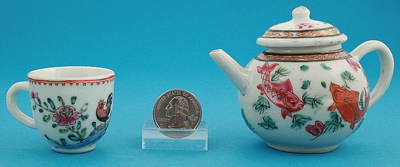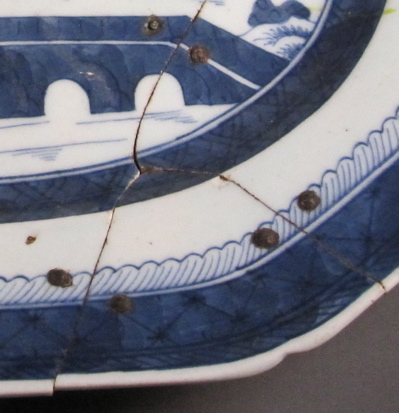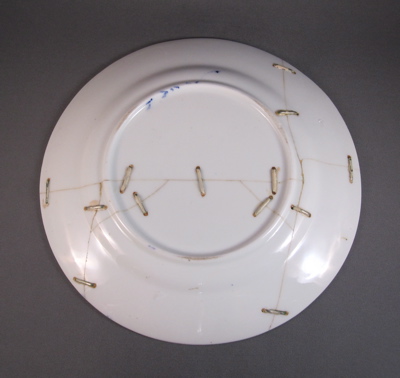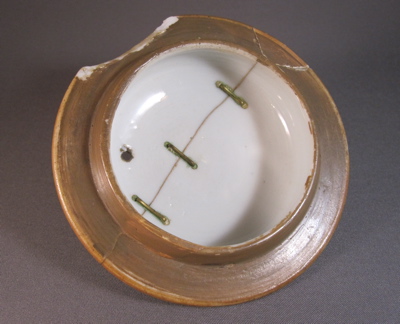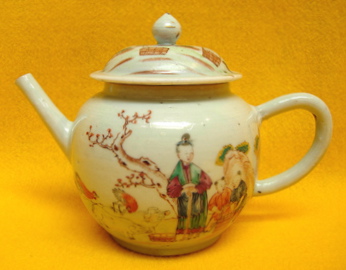Provocatively profiled pearlware pottery pepper pot. This 4-3/4″ tall Leeds pepper shaker was made in the region of West Yorkshire, UK, known for quality pottery which once rivaled the wares of Wedgwood
With a cobalt blue 7-point star design on the top…
and a ribbed, feathered band around the middle
The original base has been replaced by a beautifully made tin replacement, painted to match the cream colored body, but now yellowed with age
A cork in the bottom allows this pot to hold and dispense the pepper once again
Another Leeds pepper pot with a more typical baluster form, maintains its original base
Photo courtesy of Prices4Antiques





